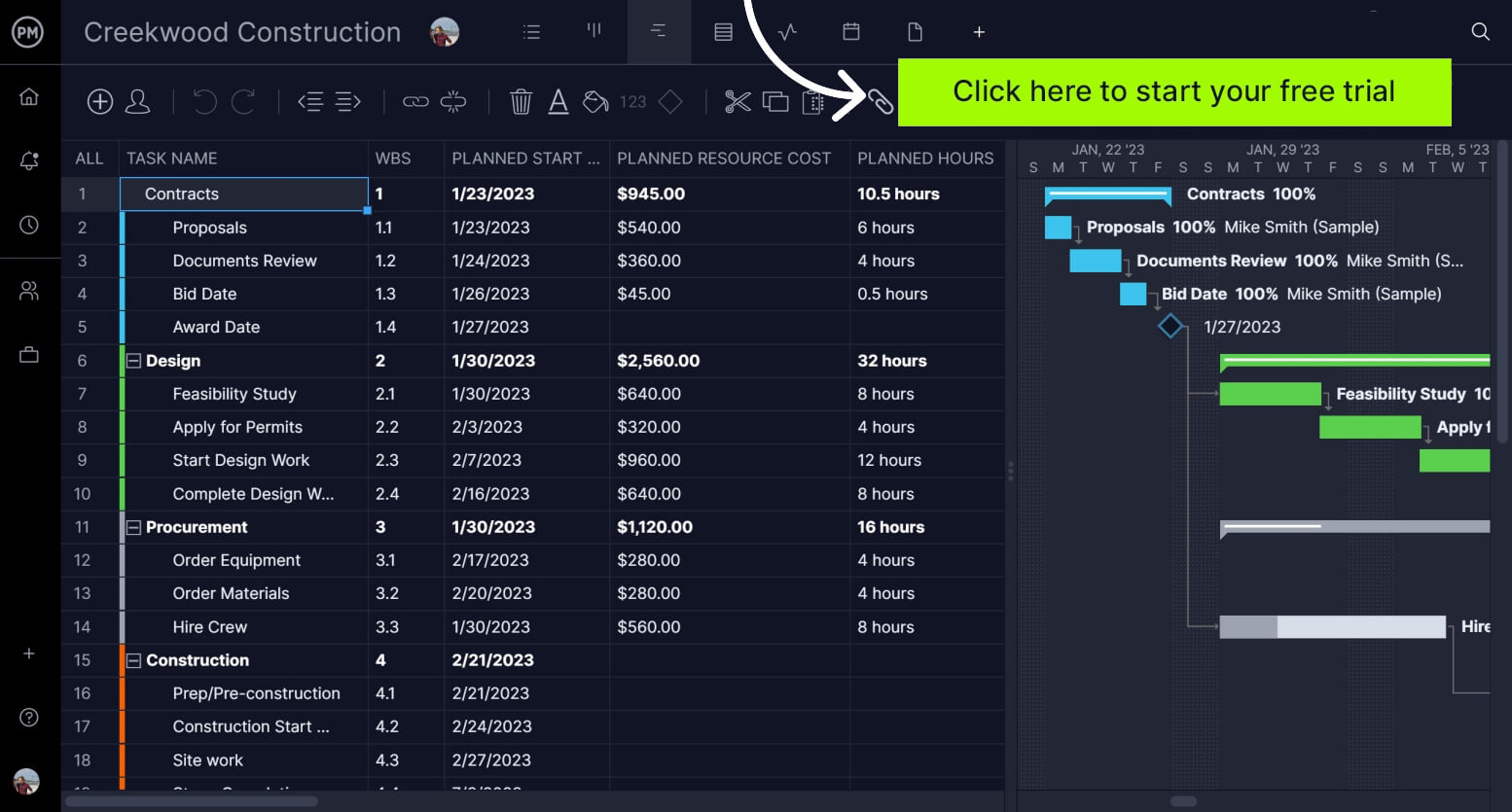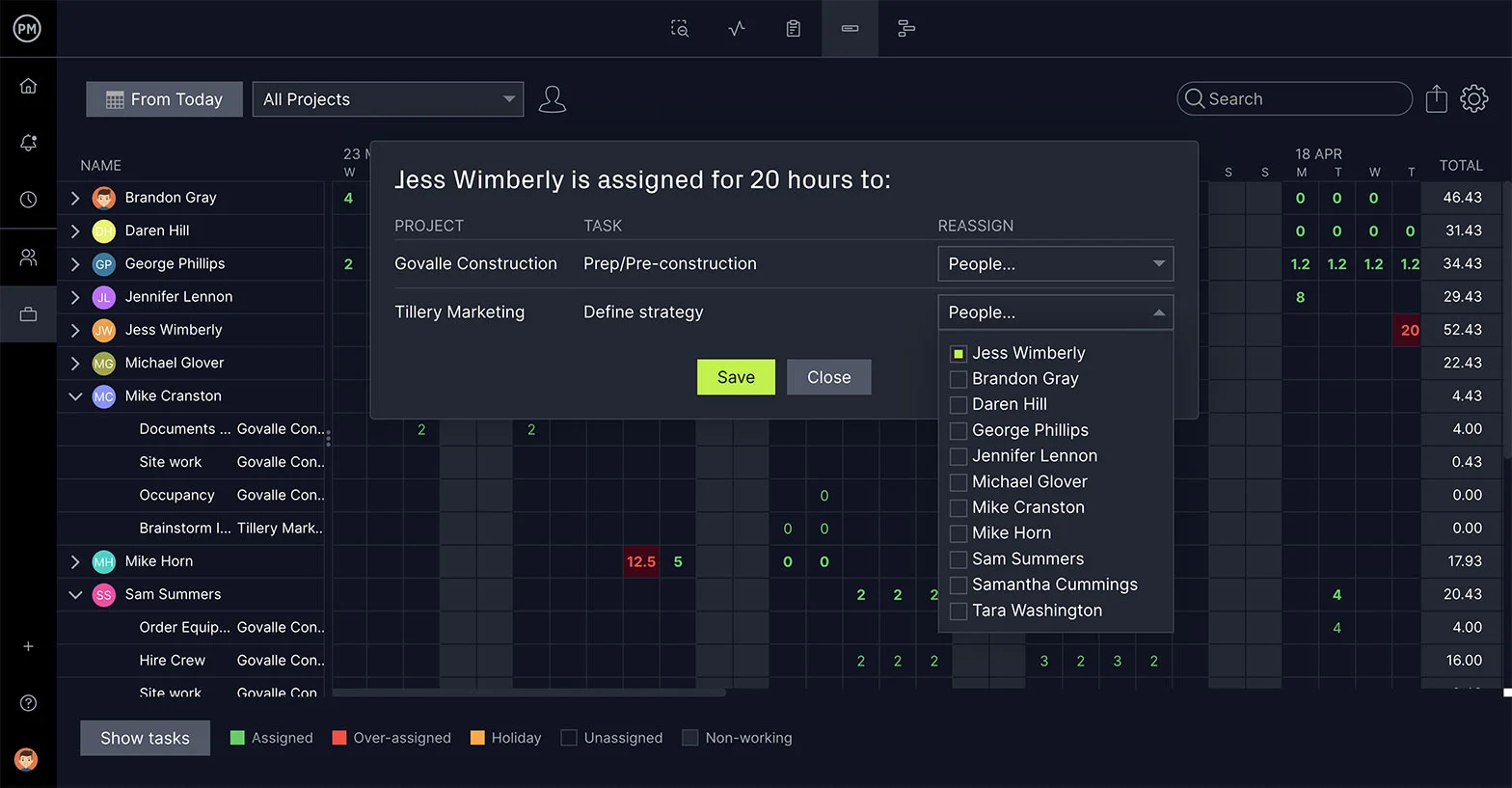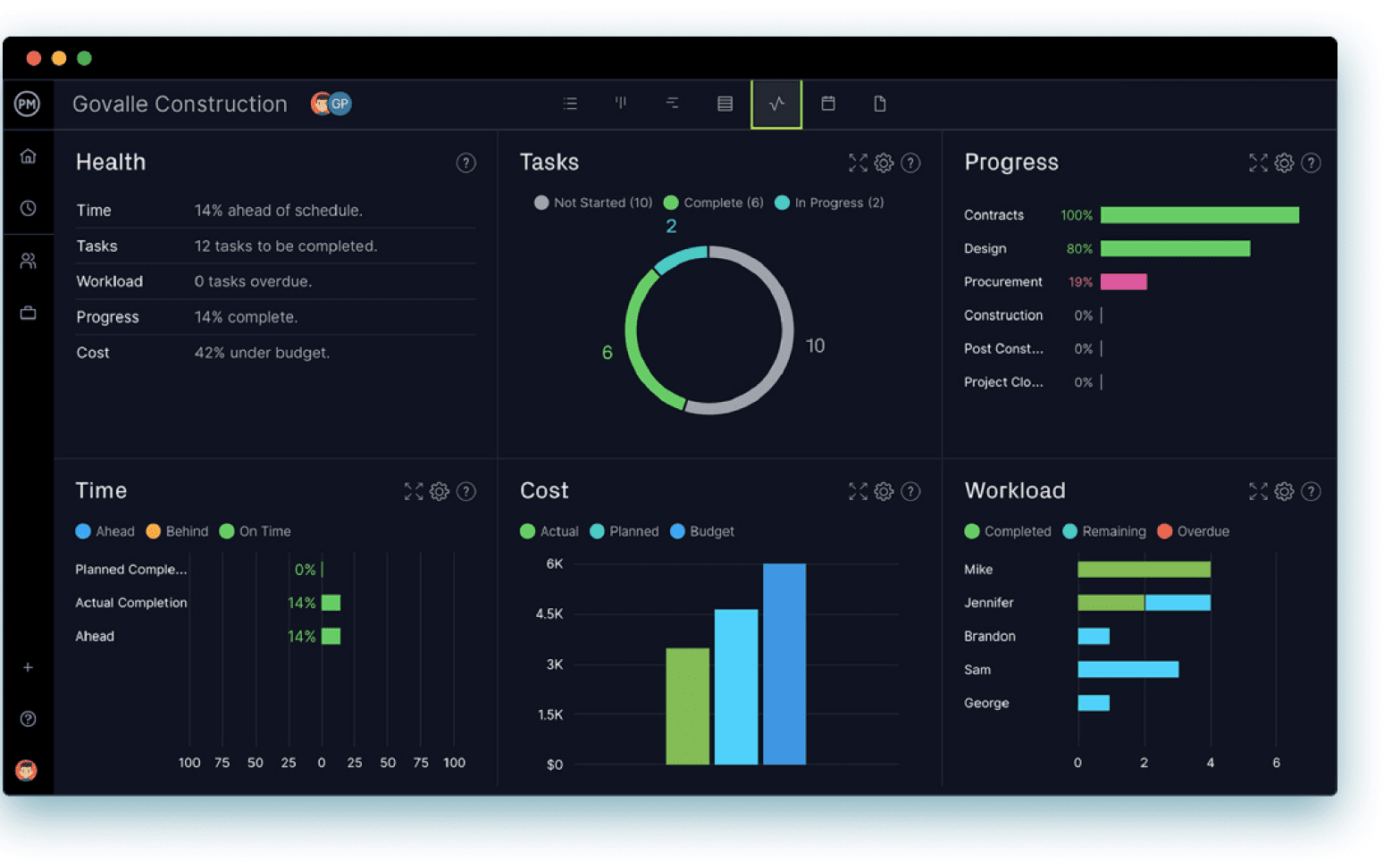There are many ways to approach budgeting. Two of the more common approaches are bottom-up budgeting and top-down budgeting. Knowing which is right for you starts with understanding both of these budgeting approaches.
Let’s start with defining both bottom-up budgeting and top-down budgeting as well as looking at the advantages and disadvantages of each budgeting approach. Then we’ll show you how to make a budget using both so you can make an informed decision.
What Is Bottom-Up Budgeting?
Bottom-up budgeting is, as its name suggests, budgeting that starts from the departments in an organization and then moves up to senior management. Therefore, the company allows each of its departments to set its budgets, including a list of expenses and cost projections, which are then submitted to senior management for review. The budget is moving from the bottom of the organization to the top, where the overall budget will be determined. It’s also referred to as participative budgeting as department managers are given a role in the process.
What Is Top-Down Budgeting?
Top-down budgeting is a method in which the senior management prepares the budget for the company. It’s a high-level budget based on the company’s objectives. That’s then passed on to the various department managers, who have to implement it. The department managers can make suggestions before the budget is prepared, though that’s not always the case, and the choice of whether to accept or reject the suggestion is at the senior management’s discretion. Once the budget is approved, senior management will make specific allocations to the various departments. In turn, they must create their budgets based on the allocations. Therefore, this budget starts at the top and works its way down the organization.
Whichever of the two budgeting approaches you choose, you’re going to need to plan and track those costs throughout the year. Project management software can help you organize your budget. ProjectManager is award-winning project management software with budgeting tools to help you plan, manage and track your budget in real time. Use our powerful Gantt charts to map your resource costs on a visual timeline. Once you set a baseline to capture the budget, you can then track your actual costs against your planned costs in real time to help you keep to that budget. Get started with ProjectManager today for free.

Bottom-Up Budgeting Benefits
Before deciding which is the best budgeting approach for you, weighing the pros and cons is important. Here are some benefits of bottom-up budgeting. For one, it brings all the departments into the budgeting process. This allows departments to participate in new projects and strategic initiatives, giving them buy-in on the finalized budget.
Executives will appreciate that bottom-up budgeting leads to more accurate estimates throughout the organization. The employees, after all, are the ones who understand the cost of what they do and the items involved in that work. Executives still have the final word on the budget so they can have a centralized strategy.
It’s less restrictive than the top-down approach. Bottom-up budgeting brings departments and leadership together, creating better communication throughout the organization, and more conversation opens up all parties to collaborate and come to a decision that serves the entire company.
Bottom-Up Budgeting Disadvantages
That doesn’t mean bottom-up budgeting is perfect. For example, while you might get more accurate estimates, you’ll find that you’re spending more. That’s because when a department can ask for what it wants, even after compromise, the total costs are likely to be higher than if the executive team made those decisions.
Also, department objectives aren’t always aligned with the larger strategic goals of the company. Because bottom-up budgeting is decentralized, it’s more likely that the organizational objectives will be neglected. Departments, of course, should be working with the larger concerns of the company, but that’s not always the case.
Another issue with bottom-up budgeting is that there are too many cooks in the kitchen, so to speak. This makes the process longer because every department is working with its teams and then communicating with executives. The process is going to take more time than if the orders came from on high.
Top-Down Budgeting Benefits
Now let’s look at the advantages of top-down budgeting. Because the executive team is in charge of this budgeting approach, you’ll find more control in terms of costs and, therefore, an increased likelihood of the company being profitable.
This central, strategic method also makes the most out of scarce resources. If departments are in control of their portion of the budget they’re going to be more free in requesting resources. The company might not have or be able to afford these extra resources, which can create issues later on when the company is executing its work.
Because the executive team is in charge of top-down budgeting and has its eyes on long-term goals and strategic objectives that the company has set for itself, it’s more likely that the top-down budget is going to align resource spending with strategic planning. This also makes it easier to manage and guarantees executive buy-in.
Top-Down Budgeting Disadvantages
As with bottom-up budgeting, top-down budgeting is not without its disadvantages. Because leadership is making the decisions, they might overlook resource requirements that the departments have more intimate knowledge of. After all, the teams in those departments understand their needs on a day-to-day basis.
Top-down budgeting can also lead to departments competing for organizational resources. Since senior management is in charge of top-down budgeting, they might not understand the needs of each department, which can cause problems. If management devotes too many resources to one department, others might find they’re spread too thin to achieve their goals.
The lack of employees and middle-level management leaders participating in the budgeting process can lead to less buy-in from the very teams that are tasked with achieving the company’s goals.
How to Create a Bottom-Up Budget
Now that you have a better understanding of these budgeting approaches, let’s look at how to create them. We’ll start with the bottom-up budgeting process.
1. Set Objectives
Before you can figure out what you can spend, you need to know what your goals are. Only by having objectives can you fund the projects to reach them. Therefore, each department needs to set objectives based on its strategic and tactical planning.
2. How To Achieve Those Objects
Next, all department managers should meet to figure out how they’ll achieve their objectives. They should suggest projects, strategic initiatives and actions that align with the strategic goals of the organization.
3. Estimate Resources and Costs
With plans in place, you now have to figure out what resource requirements those plans will need to be completed. You’ll also need to estimate those costs as accurately as possible to create a budget for the department.
4. Create a Bottom-Up Budget
Now you’re ready to make a bottom-up budget. This is done by taking all the estimated costs of each department’s budget and adding them together. This provides you with an overall budget for the company.
5. Track Budget
Once the budget is approved, you’ll need to control costs as you execute your work throughout the budgetary period. You’ll want to invest in budget-tracking tools to control the costs of the organization and stay on budget.
Top-Down Budgeting Process
Now, let’s look at how you’d put together a top-down budget.
1. Identify Departments
The first step is to audit all the departments in your organization. You’ll want to use metrics to measure which departments are contributing the most to the accomplishment of the company’s larger strategic goals.
2. Identify Resources
Next, you’ll need to identify organizational resources, which are concrete and tangible resources that will be used to achieve strategic goals. See what organizational resources are available and which will be needed to reach your goals.
3. Create and Track Budgets
At this point, you’re ready to create your top-down budget. This is done by creating individual budgets for each department based on their strategic importance and the availability of resources to help them reach the company’s objectives. As with bottom-up budgeting, you’ll want to have budget tracking tools to ensure you stay on budget.
Budgeting Templates
Whichever of the two budgeting approaches you choose, you’ll need some help. ProjectManager isn’t only software but a site in an online hub for everything project management. We have dozens of free project management templates for Excel and Word that you can download. Here are some of the budget-related ones.
Project Budget Template for Google Sheets
We not only have our free budget templates but also have one for Google Sheets, too, if you prefer that platform. Here you can download free budget templates for Google Sheets to organize your labor, material and other costs.
Budget Proposal Template for Excel (Free Download)
Before you can create a budget, you have to have it approved. Our free budget proposal template for Excel is a great way to estimate all the associated costs. We break it down by category and related costs.
Operating Budget Template for Excel (Free Download)
To get a detailed look at the coming year or quarter, use our free operating budget template for Excel. It breaks down sales, costs, operating expenses and unexpected expenses to help you accurately forecast the financial year.
How ProjectManager Helps You Create and Manage a Budget
Templates are helpful, up to a point. They’re not going to be very useful for managing a budget. You have to manually update these static documents, which is not very useful when you need to keep track of costs. ProjectManager is project management software that helps you plan, manage and track your budget in real time. Our Gantt charts help you organize your tasks and the associated costs and resources, allowing you to assign work and track it on a visual timeline. But that’s only one of the many features our software has to help you manage your budget.
Track Labor Costs With Secure Timesheets
Labor costs can quickly balloon and negatively impact your budget so they need to be monitored closely. Our secure timesheets not only streamline your payroll process, providing security by locking timesheets once they’ve been submitted to an authorized reviewer but they can also be used to track labor costs. You can look at how far each team member is in terms of having completed their tasks and the cost related to the time they’ve put into that work. If you see costs spiking, reallocate resources to get back on track.

Get an Overview of the Budget With Real-Time Dashboards
Whenever you need a high-level view of the project, just toggle over to our real-time dashboard. It automatically captures live project data and displays it as easy-to-read graphs and charts that track project metrics such as costs, but also time, workload and more. It’s like an instant status report. Unlike lightweight alternatives that make you go through a lengthy and complicated setup process, our dashboard is ready when you need it.
 Related Budget Management Content
Related Budget Management Content
If you want to know more about budgeting, we have tons of stuff you can read on our site. We publish many blogs each week and have guides, tutorial videos, and, of course, free templates that you can download. The following are some of the budget management content we’ve recently published.
- What Is an Operating Budget? Key Components & Template Included
- What Is a Budget Report? Purpose, Components & Benefits
- How to Make a Project Budget
- Manage a Project Budget with Project Budgeting Software
- How to Create Marketing Budget: A Quick Guide
ProjectManager is online project management software that connects teams whether they’re in the office, out in the field or anywhere in between. They can upload their hours, share files and comment at the task level. Everyone is always up to date with email notifications and in-app alerts. Join teams at Avis, Nestle and Siemens who are using our software to succeed. Get started with ProjectManager today for free.



